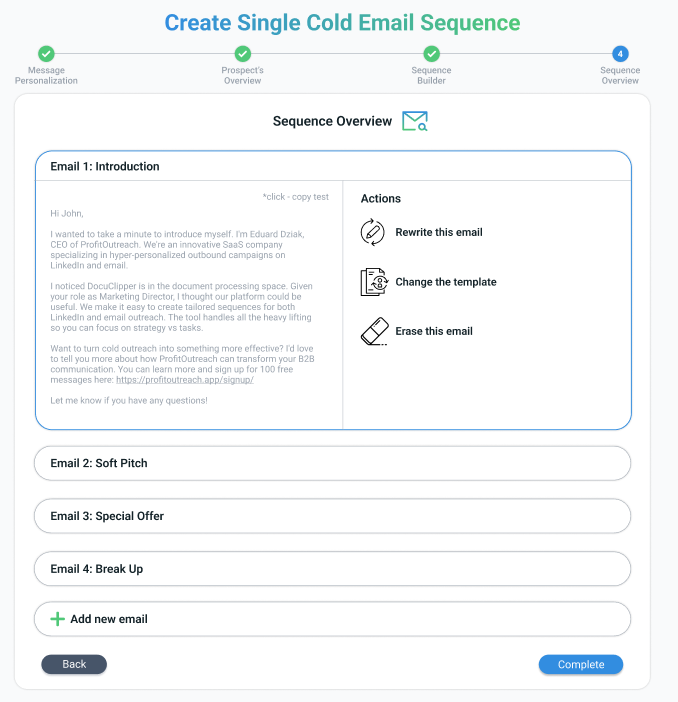Writing cold emails that actually get responses feels like solving a puzzle without all the pieces. You stare at a blank screen, wondering how to stand out in an overcrowded inbox while avoiding the spam folder. Should you be formal? Casual? How personal is too personal? Is this relevant to my prospect?
Getting it wrong means wasted time, damaged reputation, and worse, your perfect prospects hitting “delete” without a second thought. Poor cold emails can even get your domain blacklisted, crushing your outreach efforts completely.
But don’t worry this comprehensive guide will transform your cold emails from ignored to irresistible. Follow our proven framework to craft compelling messages that start meaningful conversations and drive real results.
Step 1: Find Your Ideal Customer Profile
Before we get into how to write your cold email, it’s important to talk about exactly who you’re reaching out to.
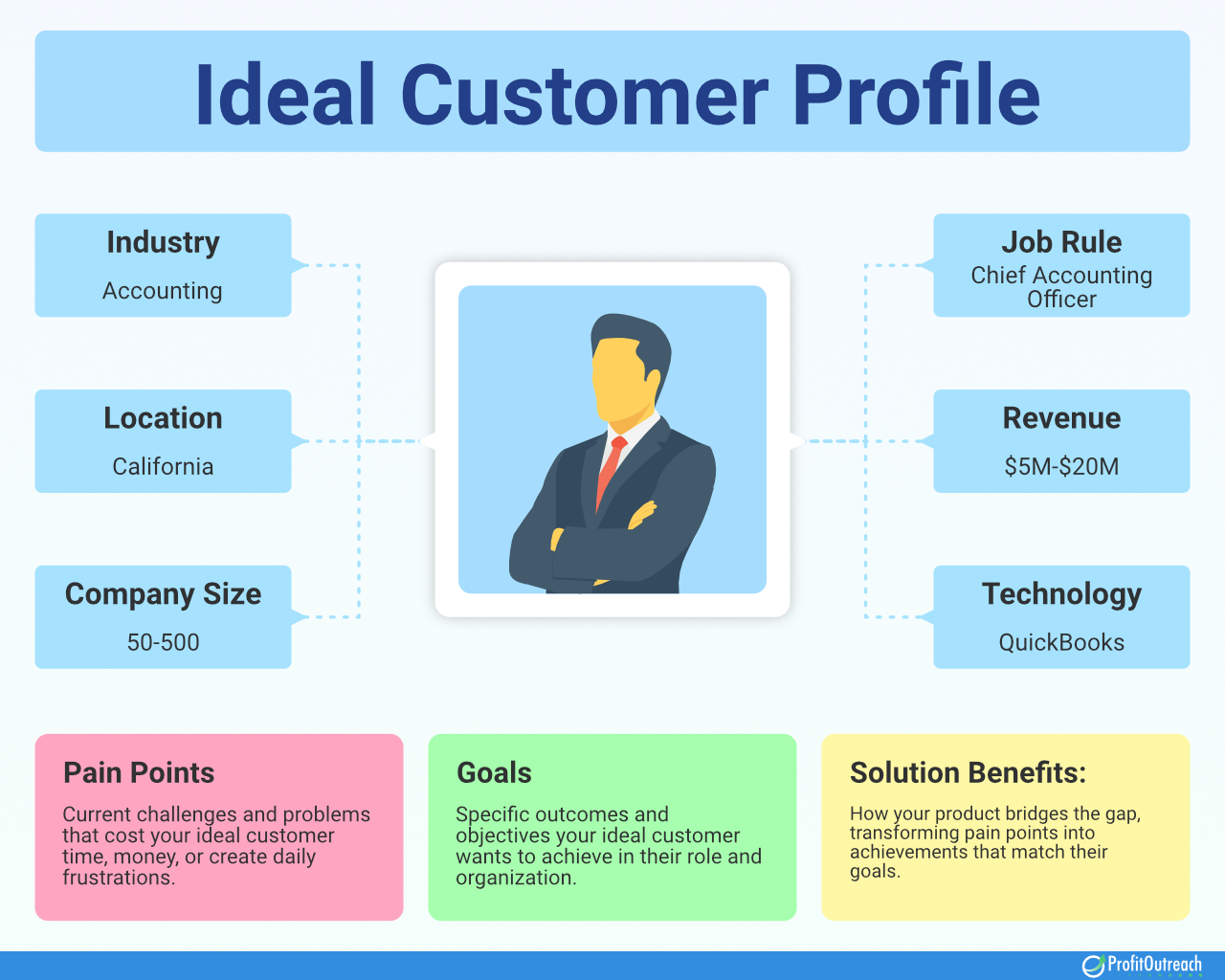
Finding your Ideal Customer Profile (ICP) is the foundation of effective outreach. I can’t emphasize enough how crucial this step is—so much so that I’ve dedicated an entire article to it, which you might want to check out for a deeper understanding.
But to keep it short and sweet here, there are several ways how you can find your ICPs, which you should combine for optimal results:
- Leverage AI Chatbots like ChatGPT: Use AI tools to brainstorm and define the characteristics of your ideal customers. These chatbots can help you generate ideas about industries, job roles, and common challenges that align with your solution.
- Explore Online Communities (e.g., Reddit): You can do your research on forums where people discuss problems that your product or service can solve. Reading these conversations helps you understand their pain points and the language they use as well as who needs your solution the most.
- Utilize Social Media Platforms: Use LinkedIn to research and identify professionals who fit your target profile. Pay attention to their posts, group memberships, and interactions to better understand their needs. Also, post a lot about your industry and analyze who interacts with your posts.
- Conduct Surveys and Interviews: Reach out directly to potential or existing customers to gather feedback. Surveys and interviews can provide invaluable insights into their challenges and what they’re looking for in a solution. Especially useful before you spend a lot of money and time on building a business.
Remember, combining these methods will give you a well-rounded understanding of who your ideal customers are.
The more precise you are in defining your ICP, the more effective your cold emails will be.
Step 2: Deep Dive Prospect Research
Once we have our ICPs, the next step is to dive deep into understanding your individual prospects.
This step is crucial because the more you know about them, the more personalized, relevant, and effective your cold email will be.
By understanding their specific pain points, challenges, and motivators, you can tailor your cold emails to resonate on a personal level which is important because personalization increases engagement and ROI from your cold email.
With that, not every prospect will respond to your research the same way.
Some prospects find pain point A more important and other prospects find pain point B more important.
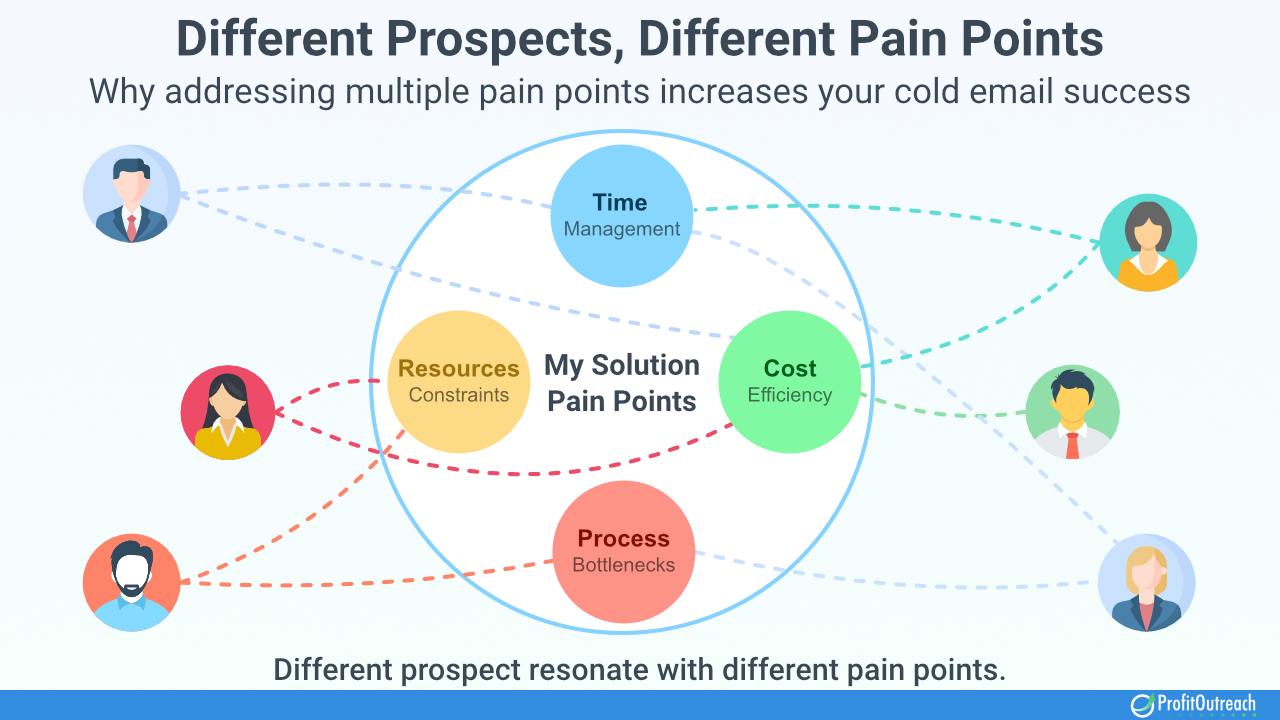
With that being said I found these ways to be the most effective in finding your prospect’s pain points, motivators, and challenges:
- Brainstorm with AI Chatbots: You can simply “discuss” with ChatGPT, Claude, or others what pain points your target audience experiences. These tools are very accurate in these predictions. However, you still need to perform market research with the below ideas to pinpoint the exact pain points, motivators, and challenges that matter the most.
- Reviews and Testimonials: Analyze reviews on competitor products or services. Note recurring complaints or suggestions.
- Forums and Communities: Explore platforms like Quora, Reddit, or niche forums. Look for threads where people discuss their frustrations about your niche.
- Competitor Websites and FAQs: Look for features or services they emphasize, which often address known pain points.
- Keyword Research: Use tools like Google Trends, Ahrefs, or SEMrush to find search queries that indicate pain points.
- Social Media Listening: Monitor platforms where your audience discusses problems (e.g., LinkedIn, Twitter, Reddit).
- Interviews and Surveys: Talk directly to your customers or prospects. Ask open-ended questions like, “What is your biggest challenge when [specific activity/problem]?”
Do as many as many of these research strategies as you can to give you a solid understanding of your target audience.
Remember, this will help you write one of the most effective cold emails, even more than understanding any cold email copywriting techniques.
Step 3: Craft Many Different Subject Line Versions
The next step is to craft several different versions of your cold email subject lines.
64% of recipients decide to open or delete emails based on subject lines.
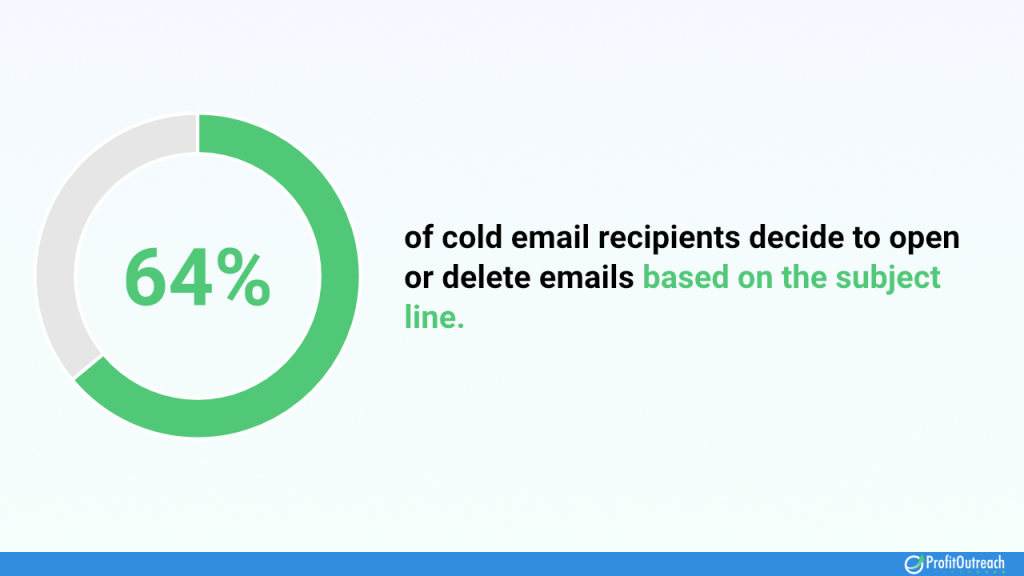
And the reasons why you need several versions of them are:
- You probably found several pain points and every prospect responds differently to each of these.
- You cannot write a really effective subject line until you actually write at least 10 of these. It gives your brain different ways of thinking about presenting your solution.
- You have options to test different versions of your cold email subject lines to see which of them really resonates with your target audience.
With that, what contributes to an effective cold email subject line?
Well, the research says that:
Personalized subject lines boost response rates by 30.5% compared to generic headlines.
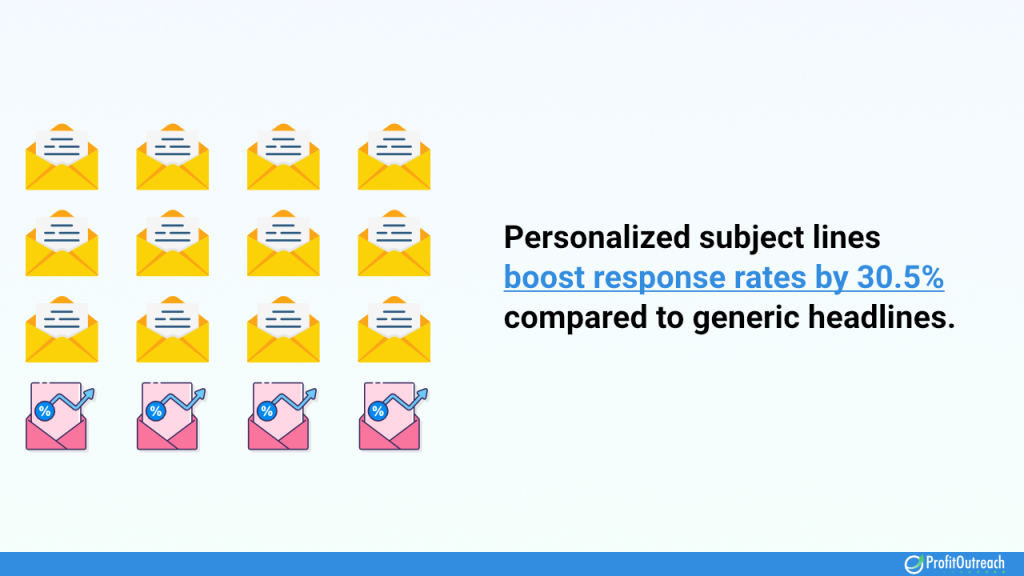
This means, you either mention prospect’s name, company name, or even their pain point.
Furthermore, cold mail subject lines with questions have a 50% higher open rate.
So asking relevant questions in your subject line can be a great strategy.
Another research shows that subject lines with numbers have a 17% higher open rate.
So including numbers can be another great way to catch prospects attention.
Next, subject lines between 36-50 characters get the best response rate.
So that could be another clue on how to write effective cold email subject lines.
And lastly, A/B testing subject lines can increase open rates by 49%.
With that said, testing is king, and you should try to write many different styles of cold email subject lines and test them which of them works the best for your purpose.
For inspiration, you can visit your mailbox. I am sure you can find very interesting examples of cold email subject lines.
Consider using spintax formatting to efficiently test multiple variations of your subject lines in a single campaign.
Step 4: Craft A lot More Opening Lines
Once you have your subject lines, the next thing is to write your cold email opening lines.
A cold email opening line is the first sentence or two that sets the tone for the rest of your message.
Many recipients decide within seconds whether to keep reading or discard an email based on the opening lines.
As renowned copywriter Joe Sugarman famously said, “The purpose of the first sentence is to get the reader to read the second sentence.”
Moreover, these opening lines often appear as preview text in email inboxes, making them almost as important as subject lines.
That’s why, you need to write several versions of your opening lines, so you find the best that aligns with your objectives as well as with the cold email content.
With that, here are some of the best practices for cold email opening lines:
- Personalize Your Approach: Regardless of what type of cold email template you will use or what the cold email will focus on, you always need to ensure that write personalized cold email opening lines.
- Be Direct and Concise: Your first line should clearly convey your message or offer value, making the purpose of your email unmistakable.
- Apply Best Copywriting Techniques: Cold email copywriting can significantly improve your cold email results while improving your cold email opening lines.
- Avoid Generic Phrases: Tailor your opening to show you understand the recipient’s specific situation or industry, leading clear of one-size-fits-all lines.
- Create a Sense of Urgency: Without sounding like clickbait, suggest that your message contains timely or unique information beneficial for the recipient.
- Avoid Unnecessary Fluff: Your cold emails need to be short and packed with value, so it’s necessary that you avoid any fluff content such as “I just wanted to touch base” or “I hope this email finds you well”.
Remember, the goal of your cold email opening line is not just to get your email opened, but to set the stage for a meaningful exchange.
Step 5: Craft Body & CTA (Optimal with Multiple Versions)
The body of your cold email is where you convey your main message, providing essential information about how you can help the recipient, while the cold email Call to Action (CTA) is a clear prompt guiding them on what to do next.
Of course, because each of your prospects is unique having several versions of your cold emails is generally recommended.
But practically it’s not always possible.
With that, here are some best practices for writing effective cold email bodies:
- Keep It Concise and Focused: Deliver your message in the shortest form possible. Busy professionals appreciate brevity and clarity.
- Highlight the Value Proposition: Clearly state how your product or service can benefit the recipient. Focus on solving their problems or addressing their needs.
- Use Simple Language: Avoid jargon and complex terms. Write as if you’re having a friendly conversation.
- Personalize the Content: Reference specific details about the recipient or their company to show that the email is tailored to them.
- Build Credibility: Include brief mentions of relevant achievements, testimonials, or case studies to establish trust.
- Make It Easy to Read: Use short paragraphs, bullet points, or numbered lists to break up text and enhance readability.
And with that here are some best practices of cold email CTA:
- Clarity Matters: Using a specific, clear CTA can increase conversion rates by up to 161%.
- Action-Oriented Language: Studies show that employing particular and action-oriented words in CTAs can cause conversions to rise by 121% compared to passive phrases.
- Creating Urgency: Adding urgency to CTAs, such as limited-time offers, can boost conversion rates by 332%.
- Simplifying Language: PartnerStack saw a 111.55% increase in its conversion rate when it changed its CTA copy from “Book A Demo” to “Get Started.”
- Be Clear and Direct: Tell the recipient exactly what you want them to do.
- Use Action Verbs: Start your CTA with verbs like “Schedule,” “Download,” “Join,” or “Reply.”
- Create a Sense of Urgency: Phrases like “limited spots available” or “offer ends soon” can motivate quicker responses.
- Keep It Simple: Avoid overwhelming the recipient with too many options; focus on one clear action.
- Test Multiple Versions: Crafting different CTAs allows you to see which ones resonate best with your audience.
Of course, what will work for you depends on the type of cold email you’re writing. If you want to promote a webinar, then the “Get Started” CTA won’t really work for you, isn’t?
Step 6: Personalized and Make Relevant Your Cold Email
Now that you have your cold email structure ready, it’s time to focus on what really makes your cold email stand out.
I can’t stress enough how crucial this step is because personalized cold emails generate 6x higher transaction rates than generic ones.
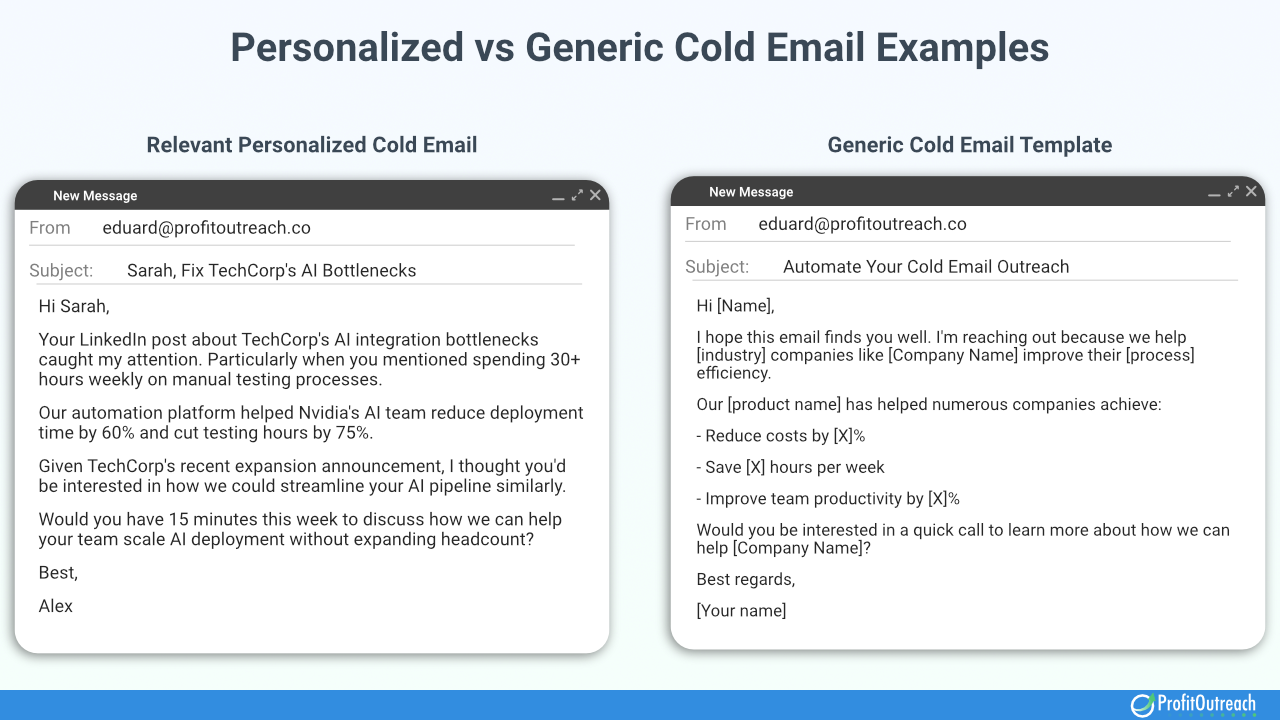
But here’s the thing, true personalization goes way beyond just adding someone’s first name to your email.
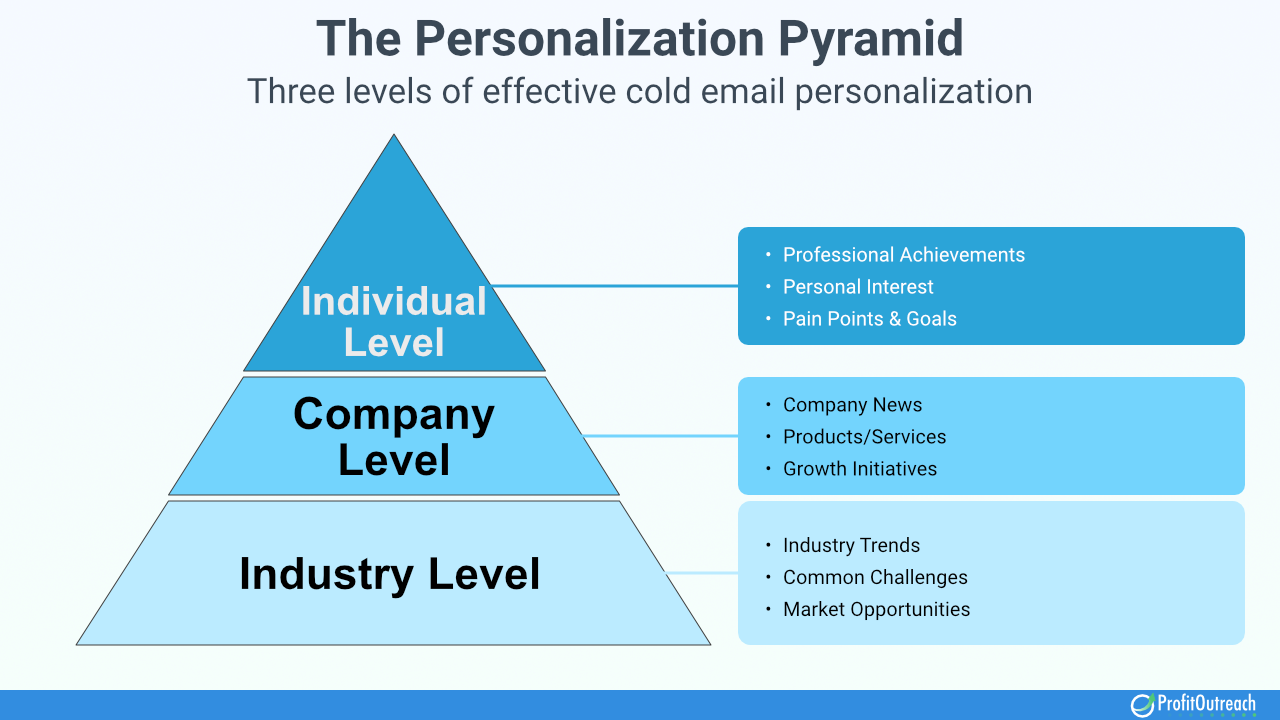
To make your email truly personalized, combine these three levels.
- At the individual level, reference their pain points, goals, achievements, and even recent news.
- For company level, mention recent news or initiatives, challenges, and motivators.
- At the industry level, discuss relevant trends or challenges.
Remember to make it relevant by answering “Why now?” and “Why them?” specifically. Connect their current challenges to your solution and show how it aligns with their goals.
Pro Tip: Before sending, ask yourself: “If I received this email, would I feel it was specifically written for me?” If not, add more relevant details, but avoid being creepy – stick to professional, publicly available information.
Best Practices for Writing Cold Email
Let me share the top 10 best practices I am using to consistently improve cold email performance.
These work across different industries and goals.
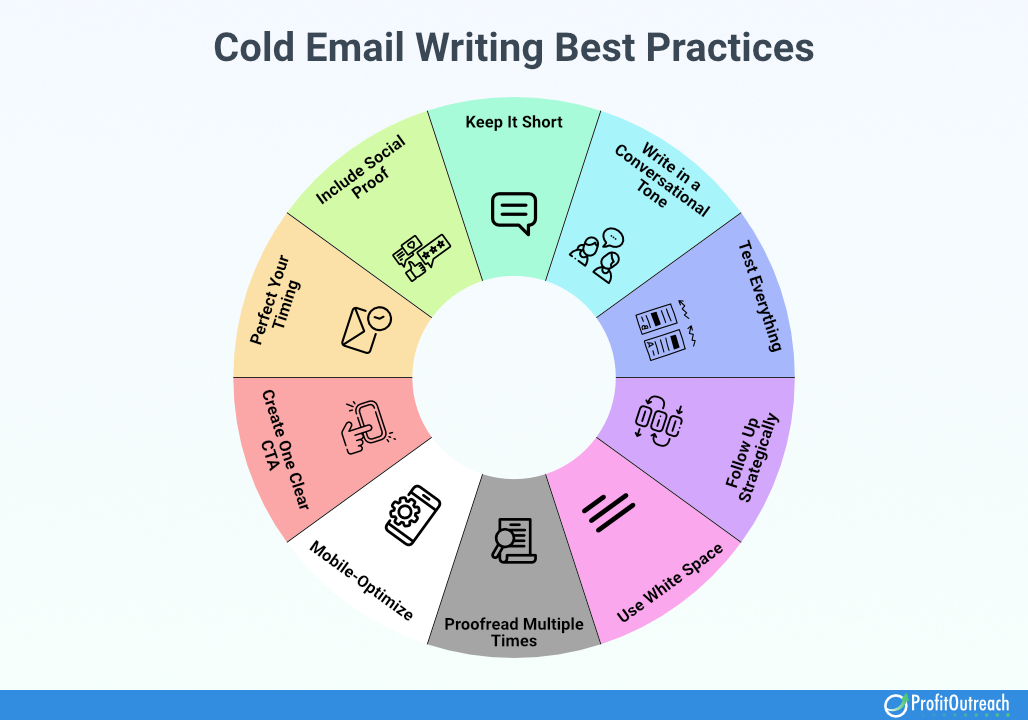
- Keep it Short (100 words is ideal): Writing concise emails helps you to deliver your message in efficient manner, while increasing the chances of prospects actually reading it.
- Include Social Proof: Mention relevant results, case studies, or well-known clients to build credibility quickly.
- Write in a Conversational Tone: Skip the formal language and write like you’re talking to a colleague – it makes your email more engaging and authentic.
- Test Everything: From subject lines to CTAs, consistently test different versions to learn what works best for your audience.
- Follow Up Strategically: Plan a cold email sequence of 3-5 follow-up cold emails, each adding new value rather than just “checking in.”
- Use White Space: Break up your text with short paragraphs and bullet points to make it easily scannable.
- Proofread Multiple Times: A single typo can hurt your credibility – always double-check before sending.
- Mobile-Optimize: 70% of emails are read on mobile first, so keep formatting simple and paragraphs short.
- Create One Clear CTA: Focus on a single action you want them to take – multiple CTAs reduce response rates.
- Perfect Your Timing: Send cold emails during business hours in their time zone, ideally Tuesday through Thursday.
Why Is It Important to Write Effective Cold Email?
Writing effective cold emails is important because it directly impacts your business’s bottom line.
Did you know that for every $1 spent on email marketing, the average return is $42? And with less than $100/ month you can quickly generate profit even if you don’t have any customers yet.
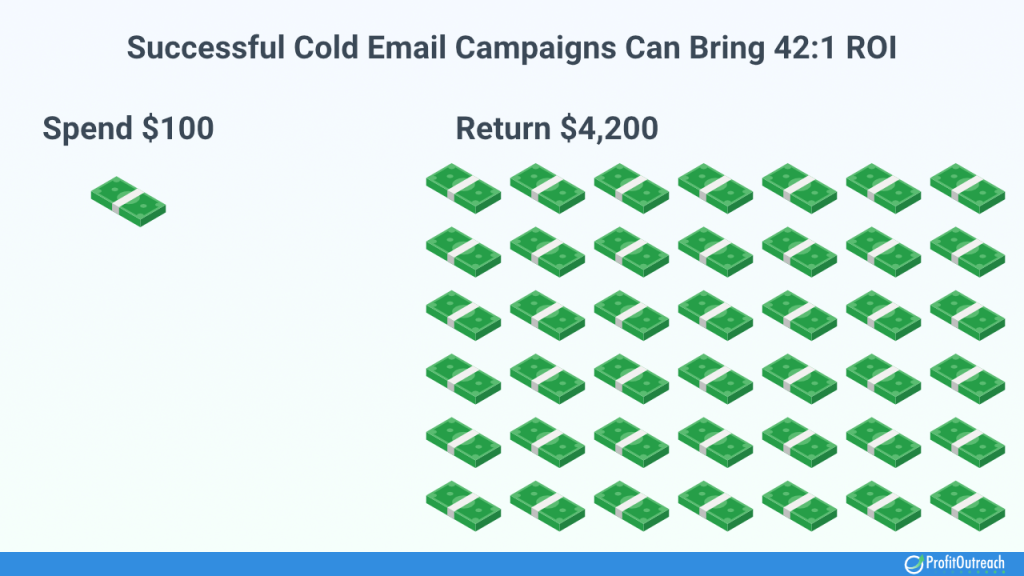
But because our prospect’s inboxes are over-saturated, stricter security rules enforced by ESPs, and generic AI messages spamming, cold email is getting harder.
So, ROI only happens with well-crafted cold emails.
Effective cold emails help you:
- Build genuine business relationships
- Generate quality leads consistently
- Reach decision-makers directly
- Scale your outreach efficiently
- Stand out in crowded inboxes
Plus, unlike other marketing channels, cold email gives you complete control over your message and timing while being one of the most cost-effective ways to acquire new customers.
What is a Cold Email?
A cold email is a direct message you send to someone who doesn’t know you or expects to hear from you. Think of it like introducing yourself at a business event, but through email.
Unlike spam, cold emails are personalized and relevant outreach efforts targeting specific individuals who could genuinely benefit from what you offer.
They’re not mass-blasted promotional messages – they’re strategic business communications.
The key difference? Cold emails focus on starting meaningful conversations and building relationships, not just pushing for immediate sales.
Why is Cold Emailing Effective?
Cold emailing remains one of the most effective outreach strategies because it combines several key advantages that other channels can’t match.
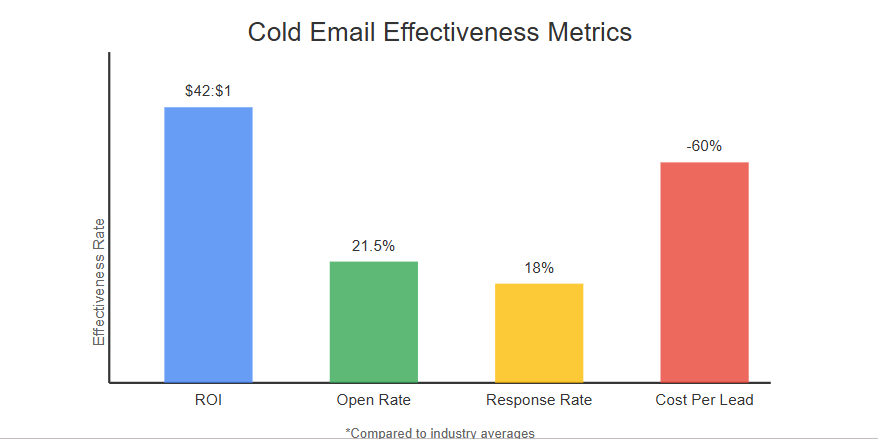
What makes it so effective?
- Direct Access: Lands directly in decision-makers inboxes
- Scalable: Easy to reach hundreds of prospects while maintaining personalization
- Measurable: Track opens, replies, and conversions precisely
- Cost-Efficient: No ad spend or platform fees required
- Professional: More formal than social media but less intrusive than cold calls
- Flexible: Test and improve your approach based on real data
Plus, people check their emails 75+ times per day, making it the most reliable way to reach busy professionals.
How ProfitOutreach Writes the Best Cold Emails
Curious how ProfitOutreach crafts winning cold emails? Our AI-powered cold email generator analyzes over 40+ personalization points from each prospect’s digital footprint – their website, LinkedIn profile, company news, and more.
We build rich prospect profiles with 2,000+ words of context, then transform them into personalized and relevant cold email sequences.
Just pick your template, provide your info, and let us create unique sequences for your entire prospect list, whether it’s 1 or 1,000 contacts.
FAQs about How to Write a Cold Email
You’ve got questions about cold emails – we’ve got answers!
Whether you’re just starting out or looking to refine your approach, these frequently asked questions cover everything from basic structure to expert tips.
How to write a good cold email?
Write a good cold email by following these key steps: research your prospect thoroughly, craft a compelling subject line, personalize your message, provide clear value, and include one specific call-to-action. Keep it concise and focused on how you can help solve their problems.
What is a cold email example?
Hi Sarah,
Saw TechFlow’s growth plans for Q2. We’ve helped Dropbox, Stripe, and Canva streamline their APAC expansion, cutting setup time by 40%. Would you be open to a 10-minute chat about your current international hiring challenges?
Best,
Alex
PS: Our recent case study with Dropbox shows how we reduced their hiring compliance time from 3 months to 3 weeks in Singapore.
How do you introduce yourself in a cold email?
Introduce yourself briefly by stating your name, role, and company – then immediately connect it to something relevant to your prospect. Skip generic pleasantries like “I hope this finds you well.” Focus on why your introduction matters to them specifically.
How long should a cold email be?
Keep your cold email between 50-125 words, which typically equals 2-3 short paragraphs plus a CTA. Studies show emails this length get the highest response rates. Think of it as a 30-second elevator pitch in written form.
How do you grab attention in a cold email?
Grab attention by leading with a relevant insight about their business, a mutual connection, or a specific challenge they’re facing. Use personalized subject lines and opening lines that show you’ve done your homework. Avoid clickbait or overly salesy language.
How do I close a cold email?
End your cold email with a specific, low-commitment call-to-action that’s easy to say yes to. Instead of “Let me know if you’d like to chat,” try “Would you be free for a 10-minute call this Tuesday at 2 PM?” Keep it simple and clear.
Relevant Articles:
- 10 Best Cold Email Software Companies
- Achieve the Best Cold Email Deliverability with These 19 Best Practices
- Answer to How Many Cold Emails to Send Per Day
Relevant Cold Email Templates:
- Use Cases Cold Email Template Guide: Examples, Best Practices, and Tips.
- Value Proposition Cold Email Template Guide: Examples, Best Practices, and Tips
- Follow-Up Cold Email Template Guide: Examples, Best Practices, and Tips

